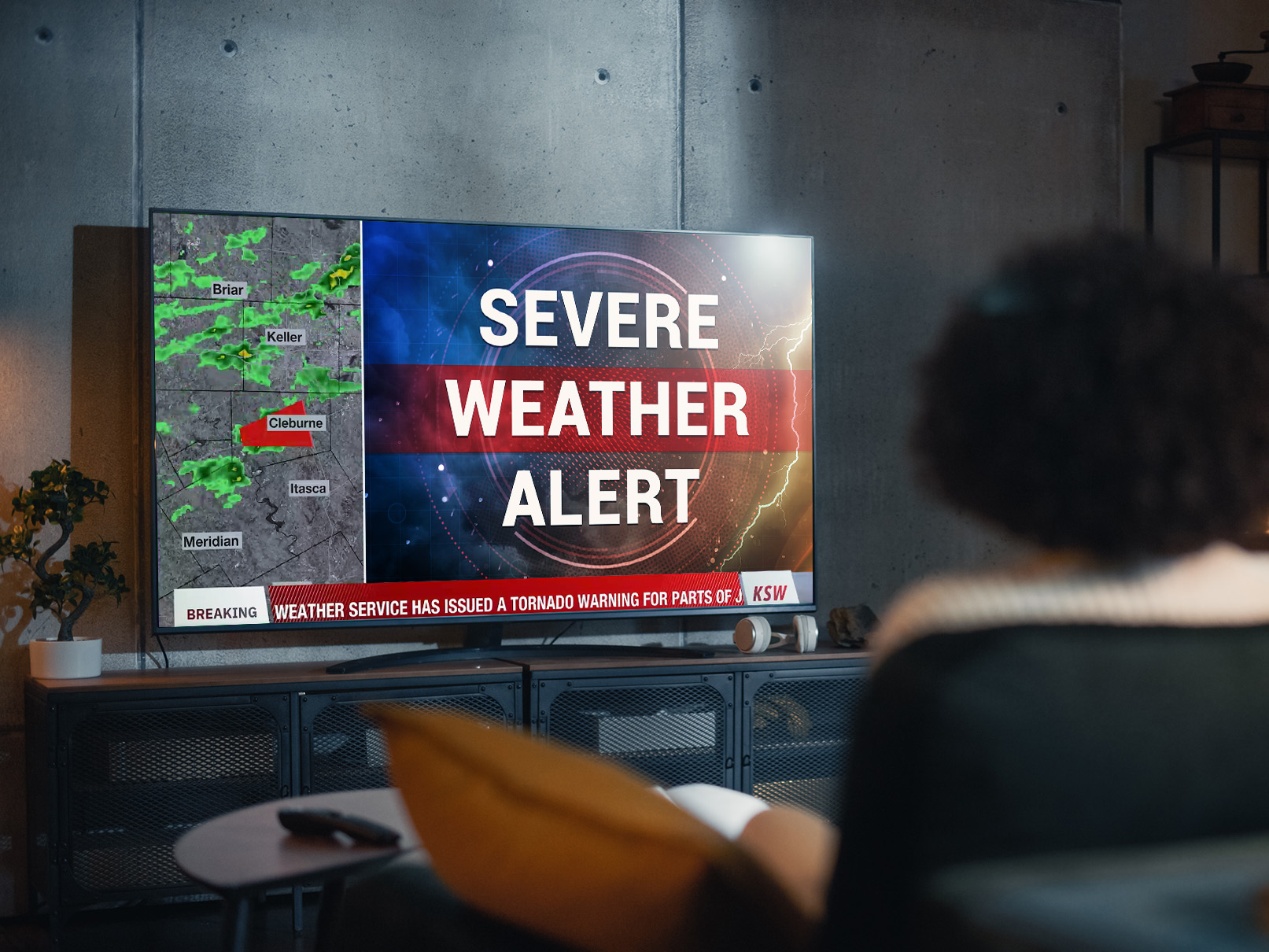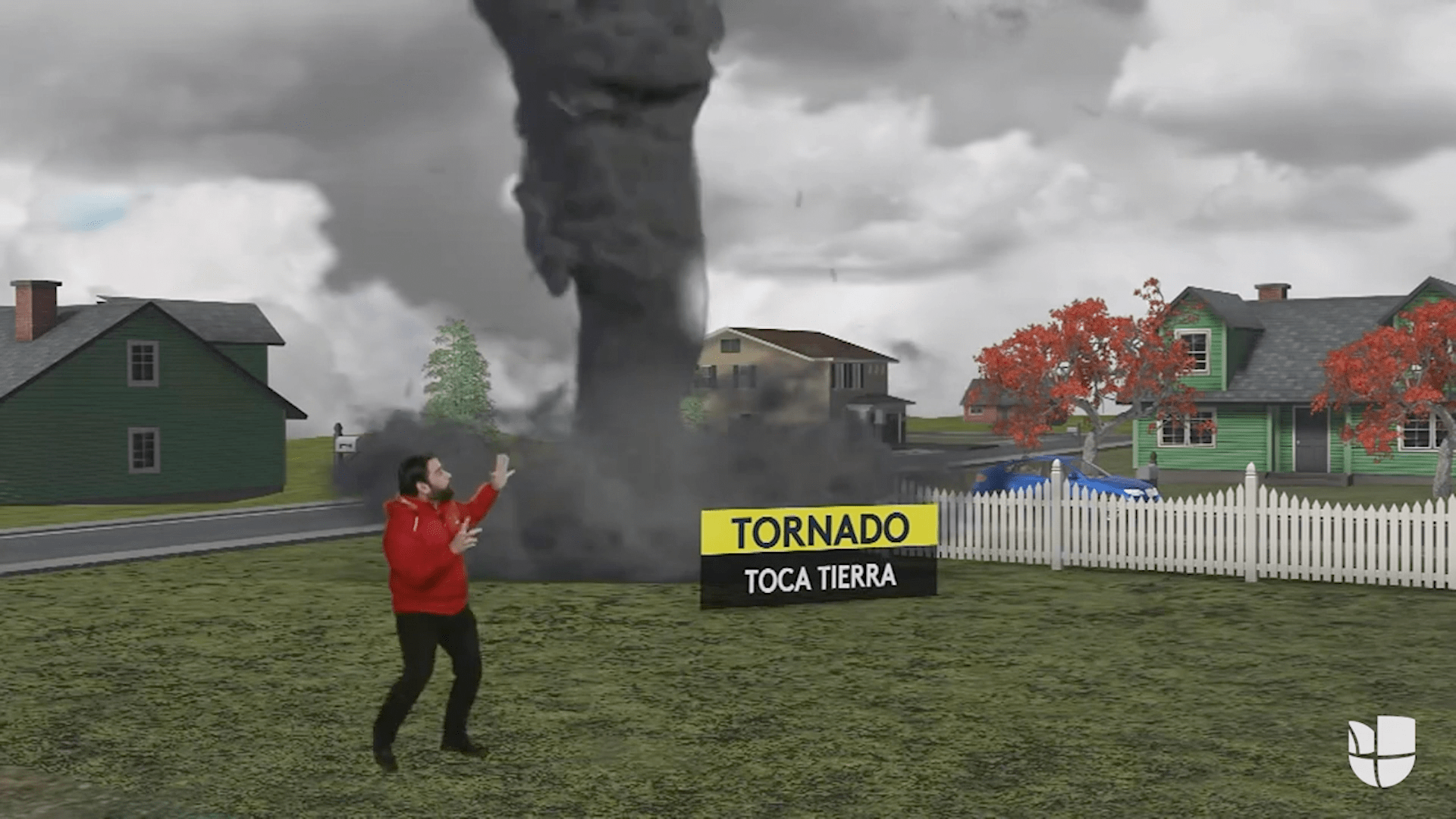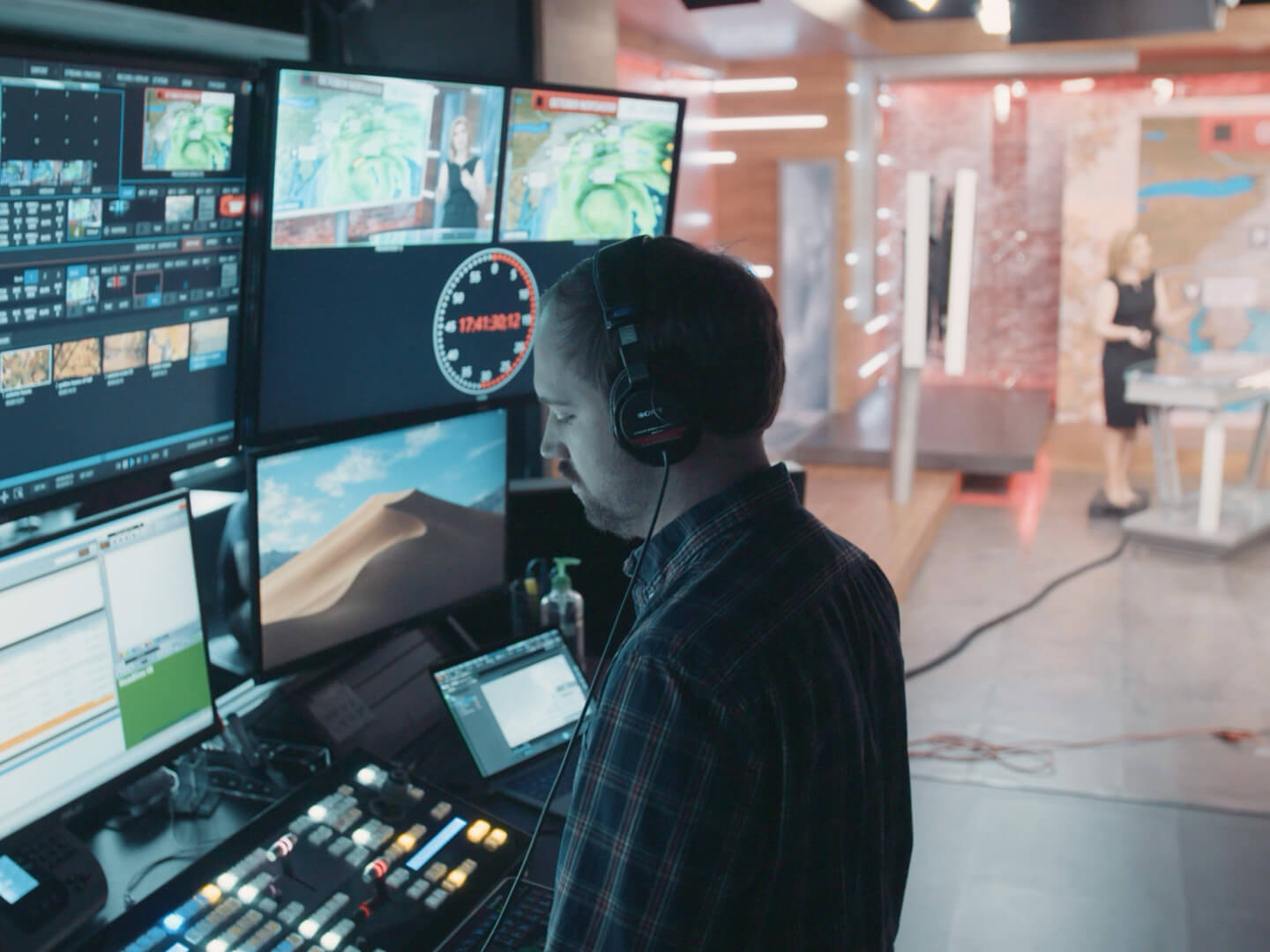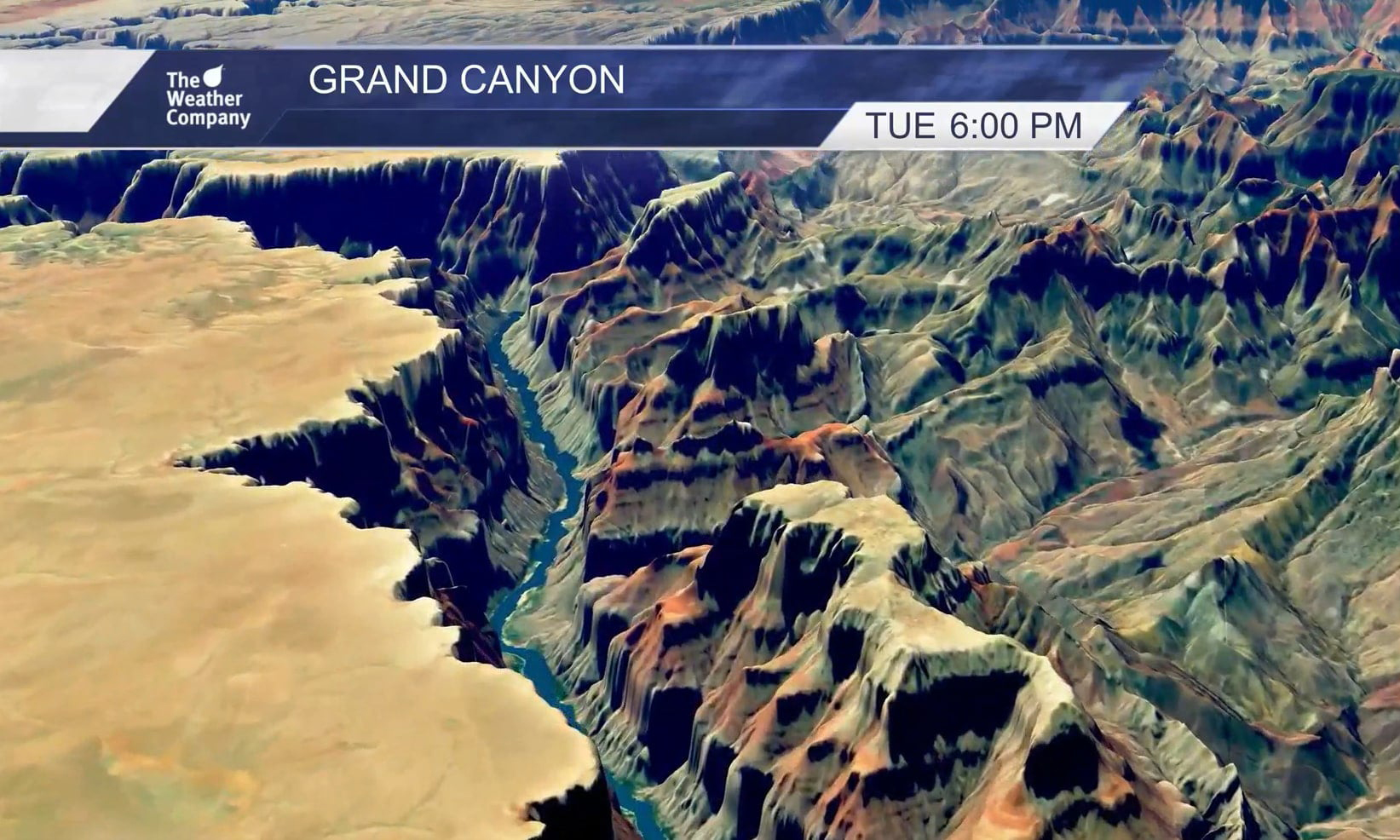Cannes 2024: Weather’s impact on the Croisette and beyond
Continue readingIt takes a lot of effort for weather broadcasters to capture and keep their audience’s attention at a time when viewership is becoming increasingly fractured. It requires a mix of engaging graphics, accurate, up-to-date information, and high production quality to deliver broadcasts that resonate.
Striking the right balance is critical — after all, weather broadcasters play a pivotal role in bridging the gap between complex meteorological data and the public’s need for accessible and actionable weather information. To disseminate critical information quickly and in a compelling format, broadcasters need live broadcasting software that’s versatile enough to handle the many nuances of weather reporting.
Your live broadcasting software should empower your team of meteorologists and weather reporters to transform raw data into comprehensible and visually appealing broadcasts that can inform, educate, and sometimes even entertain viewers. Whether it’s tracking a storm in real-time, providing evacuation routes during a hurricane, or explaining the science behind a heatwave, the software that enables your broadcasts needs to ensure precision, speed, and clarity in every weather report.
What is live broadcasting software used for?
Live broadcasting software has become an essential tool in the meteorological and media fields, particularly for reporting severe weather events such as thunderstorms, wildfires, tornadoes, blizzards, and hurricanes. This technology enables real-time dissemination of crucial weather updates and information, leveraging advanced tools like satellites and weather radars to predict weather patterns. Your team can use these tools alongside forecasting models to issue alerts and provide the public with actionable information.
Of course, weather content is most relevant when it’s focused on a viewer’s local region. But delivering hyperlocal content at scale is difficult because it requires significant resources, both in terms of technology and human expertise.
Live broadcasting software minimizes these challenges. It has been instrumental in powering 24/7 weather streaming services with hyperlocal content for communities across the globe. As audiences — especially younger generations — begin to favor streaming services, this technology enables you to reach viewers directly on their preferred platforms.
What are the advantages of broadcasting weather live?
Live weather broadcasts have been a local news staple for decades. But what’s groundbreaking is the ability to stream real-time updates 24/7 from anywhere. Viewers can gain access to valuable weather information right when they need it — without having to wait until the 6 o’clock news rolls around.
Timely
No matter where viewers live or what devices they use, live broadcasting software enables you to reach them with immediate weather updates for their local area. This is especially critical when weather conditions change rapidly because the accuracy of the information can significantly impact viewers’ decisions and safety. Live broadcasting software empowers your team to support real-time updates across streaming channels for every locality you serve without scaling staff or resources.
Highly engaging
Live weather broadcasts have the power to captivate audiences. Ashton Altieri from CBS Colorado noted that platforms like over-the-top (OTT) streaming channels have seen increased viewer engagement, with audiences dedicating a significant amount of time to consuming weather content. This engagement is critical for maintaining and growing your viewer base at a time when fewer households consume weather reports through traditional news broadcasts.
Loyalty
According to research commissioned by Magid and The Weather Company, only 44% of viewers use cable or satellite as a primary source for weather updates on TV. This means that there’s a tremendous opportunity to drive audience engagement by offering more relevant and personalized live weather broadcasts — especially for streamers. More than a third (40%) of all TV viewership is now streaming-related. By offering live streaming options, your company can capture more of this audience share.
Reusable
A robust weather broadcast software lets you repurpose content from live broadcasts across multiple channels, maximizing reach and engagement. This versatility allows you to leverage social media platforms, websites, and mobile apps to make your broadcast content accessible to audiences, wherever they are.
Revenue opportunities
Expanding beyond linear broadcasting into live connected television (CTV) presents a lucrative opportunity for boosting your company’s revenue potential. Magid predicts the CTV revenue stream will grow from $2.7 billion to $3.5 billion by 2027. Additionally, 98% of broadcasters are interested in sponsoring weather content on CTV and OTT platforms.
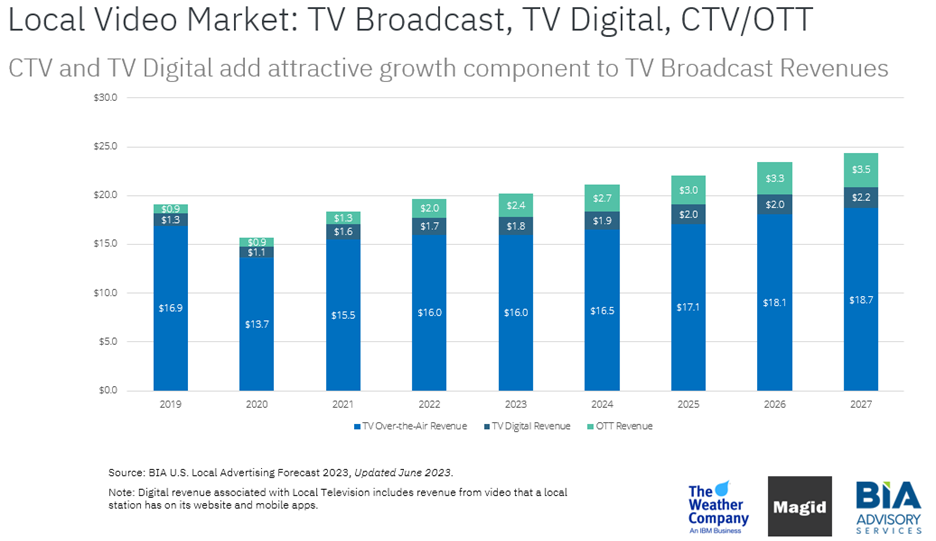
The advantage of CTV and OTT advertising lies in their capacity for hyperlocal targeting, offering advertisers unprecedented precision in reaching specific markets and tailoring campaigns to local audiences. This is especially attractive for advertisers that have historically invested in ad placements on local TV stations, including legal service providers, hospital networks, and car dealerships.
Where can a live weather broadcast software be used?
Live weather broadcast software can enhance all aspects of weather programming, from the newsroom to the field. Here are just a few ways live weather broadcast software can be used to deliver more high-quality reports.
Newsroom broadcasts
Live broadcasting software is vital in newsrooms for swiftly creating and sharing weather reports and alerts, keeping viewers well-informed when they need it most. During a broadcast, every second matters, which makes having a seamless, responsive software infrastructure essential.
Reporting on-location
Remote broadcasts transmit video and audio content from remote locations back to your studio using digital video transmission, cloud-based platforms, and remote control systems. This setup gives your team of meteorologists greater flexibility in how they cover specific weather conditions. On-location reporting lends immediacy to weather updates. It offers viewers firsthand insights into weather conditions, making the information more relevant and engaging. This approach also adds a human touch to weather reporting that is difficult to replicate. When paired with tools like augmented reality, reporting outdoors or outside of the typical studio can immerse an audience into a whole new world of storytelling.
6 key considerations for a live weather broadcast software
Not all live broadcast software is created equal. The right software for your organization will depend on your specific needs and preferences. Ask yourself what features are non-negotiable, and begin your search from there.
1. Streamlined workflow
Software with streamlined weather broadcast workflow capabilities can help you create and distribute weather content from any location, at any time. This flexibility allows for seamless collaboration among remote and hybrid team members, eliminating production delays that prevent you from delivering real-time weather updates across channels.
2. Simple to manage
The ideal live broadcast solution should enable your team to create and distribute weather content without needing extensive technical skills or advanced hardware. These features include user-friendly interfaces, preset broadcast templates for quick content creation, and automatic updates to ensure the software remains current without manual intervention.
3. Cloud storage
Prioritize the integration of cloud storage in your broadcasting software selection. This essential feature helps ensure that live streams and generated content are securely backed up and easily accessible for future use across various mediums.
4. Asset library
Access to a well-organized asset library containing pre-developed weather graphics, templates, and other resources aligned with brand guidelines supports the production of professional and consistent live streams. This repository is invaluable for maintaining brand identity and enhancing the visual appeal of weather broadcasts, especially when you’re moving fast to publish real-time severe weather alerts and warnings.
5. Accuracy & speed
Weather consumers want faster access to information and more up-to-date reports on severe weather, according to a report commissioned by Magid and The Weather Company. Live broadcast software can help you automate content delivery with minimal manual oversight.
The most robust solutions employ sophisticated models, analysis tools, and data feeds that enable your team to improve predictions and deliver accurate forecasts. For example, The Weather Company integrates with the National Weather Service (NWS) to ensure broadcasts always utilize up-to-date weather data from an authoritative source. The Weather Company’s Max Alert Live solution actually has a direct integration with the NWS so alerts are automatically surfaced in order to be the first to air with live-saving information.
6. Production quality
Poorly produced weather segments distract viewers, leading them to tune out your broadcasts. High-quality video production can keep audiences engaged — and you don’t need big teams of professional videographers and animators to pull it off. As a bonus, you can unlock more advertising opportunities, especially in hyperlocal markets, as your volume of published content increases without risking quality.
Broadcast software that’s easy for teams to use with minimal training can take your production quality to the next level. In particular, features like augmented reality can significantly enhance the viewer experience, making complex weather information more understandable and visually appealing. Viewers often tune out standard weather graphic illustrations, but augmented reality can make weather reports more cinematic and engaging. Ultimately, the technology opens up new avenues for creativity in weather storytelling.
Share your broadcast live streams from anywhere at any time with Max Velocity
The Weather Company’s Max Velocity solution is at the cutting edge of broadcast software, enabling broadcasters to produce and share compelling weather content on various digital platforms from anywhere at any time efficiently.
By automating content creation and leveraging advanced broadcast software, Max Velocity allows for personalized, hyperlocal weather reports and alerts. This not only increases engagement across digital platforms but also provides your team of meteorologists with the tools to deliver impactful weather stories.
Interested in hearing more about how Max Velocity and other advanced broadcasting software can take your weather reports to the next level? Get in touch today to get the conversation started.
Let’s talk
To learn more about choosing the right live weather broadcasting software, contact our media experts today.
Contact us



